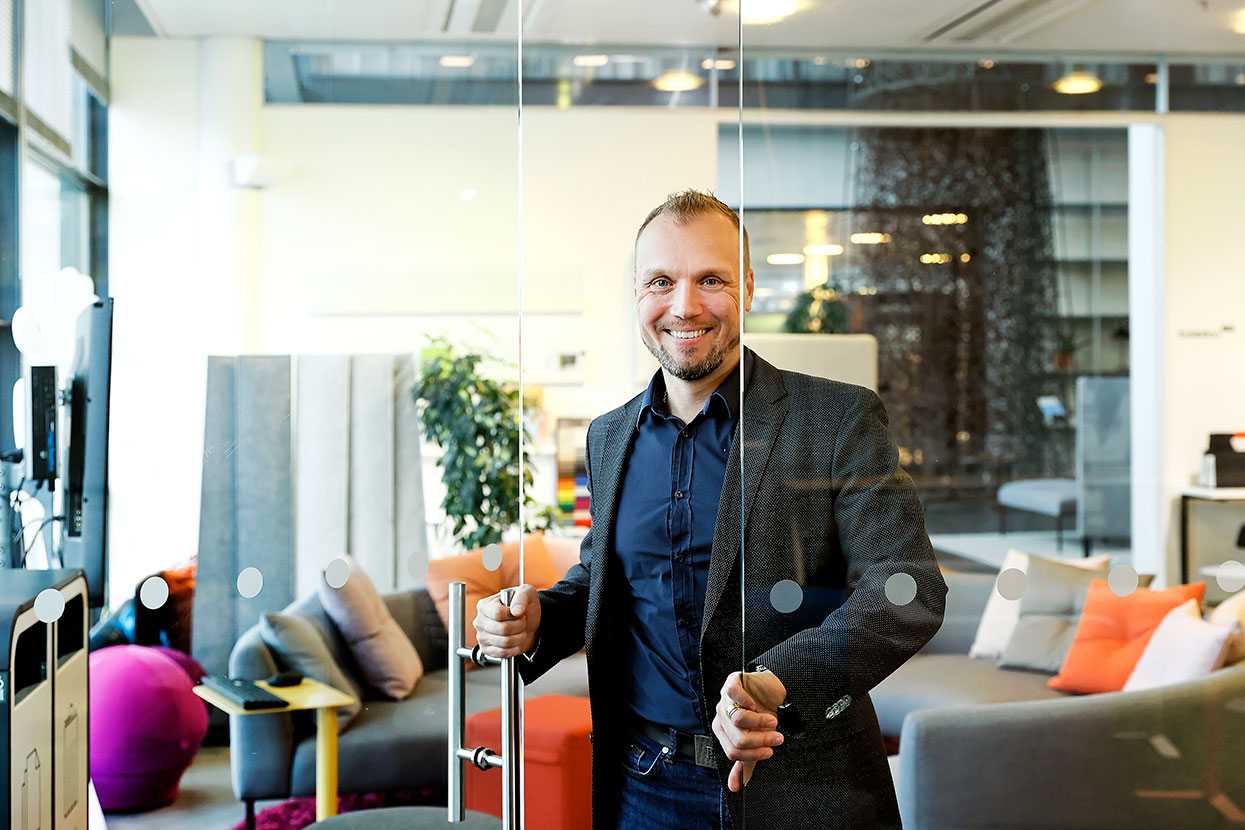This is how companies overcome challenges during the state of emergency
Workplace as a service, sensors, home ergonomics... This is how companies overcome challenges during the state of emergency
The last couple of months have caused a lot of trouble for companies, and the need to think hard. How can a workplace be organised to make it safe and cost-effective? How will the current year turn corporate culture and ways of working upside down? What kind of workplace will serve tomorrow’s needs?
Artti Aurasmaa, the new CEO at Martela, has a comforting message to company executives scratching their heads: there is no need to build a workplace for decades ahead. Purchasing Workplace as a Service (WaaS) helps companies adjust their operations to changes in working life and needs.
Today, companies purchase Workplace as a Service just as they purchase information technology and office space.
"The pandemic has in part accelerated the transition in which we currently live. The state of emergency caused by the pandemic will permanently change workplaces and the ways people work. Bearing this in mind, we need to look at the workplace lifecycle in a wholly new way,” Aurasmaa says.
Aurasmaa has a strong background in the creation of various lifecycle models. Formerly he headed, for example, 3StepIT, a service provider for lifecycle management in information technology. Aurasmaa points out that some companies have come to notice the need for an ergonomic workstation for their employees even at home. Telecommuting will play an increasingly large role in the future.
”Hybrid work has come to stay. Many people have noticed that they get their work done well at home, but the social aspect of work and creating together get ignored. The future office space must attract people to come and work together in the same spot,” Aurasmaa says.
The pandemic is transforming corporate cultures
Aurasmaa points out that the pandemic is an excellent point to rethink ways of working and to agree on them together with the personnel.
”Communities are based on the glue between their members, and no corporate culture exists without cooperation and interaction between the personnel. If people shift to do their work by telecommuting only, there is a high risk of losing the soul of the company or the community in the end. The new era of working requires that people are truly willing to come to the office to work together and that home is not the only attractive option,” Aurasmaa says.
It would be good to spend some time in companies thinking how work is actually done and what kind of space model would serve their needs. A good workplace does not have to provide a personal workstation for everyone if the work is also done at home. Instead of a personal workstation, the company could offer the freedom to choose a workstation in a silent room or in the middle of everything. This will also help reduce the amount of space needed for the office.
It is sure that a workplace built today will not serve its purpose for as long as ten years.
"The ways of working are undergoing a very quick transition, and the workplace must be able to flexibly keep up with the change. Who would have believed ten years ago how much space we need for online meetings, for example? Or that some, say, factory visits have been replaced with VR goggles,” Aurasmaa asks.
A good workspace offers space for independent work, groupwork, interaction and recreation. It is an essential factor for defining the employee experience.
Sensors indicate what kind of space employees want
Measuring the workplace utilisation rate is an uncompromising means of telling what kind of workspace the employees want. At the same time it enables development of the least-used spaces in such a way that employees enjoy using them.
Information beats having a hunch, but data does have its own role when it comes to safety during the pandemic. It reveals which areas in a workplace become crowded and what kind of space is in highest demand. During the coronavirus pandemic, many employers have restricted the utility rate of their offices.
”Sensor data can, for example, tell the cleaning company which workstations have been in use. We also provide applications with which employees can reserve a workstation at the office in advance,” Aurasmaa says.

